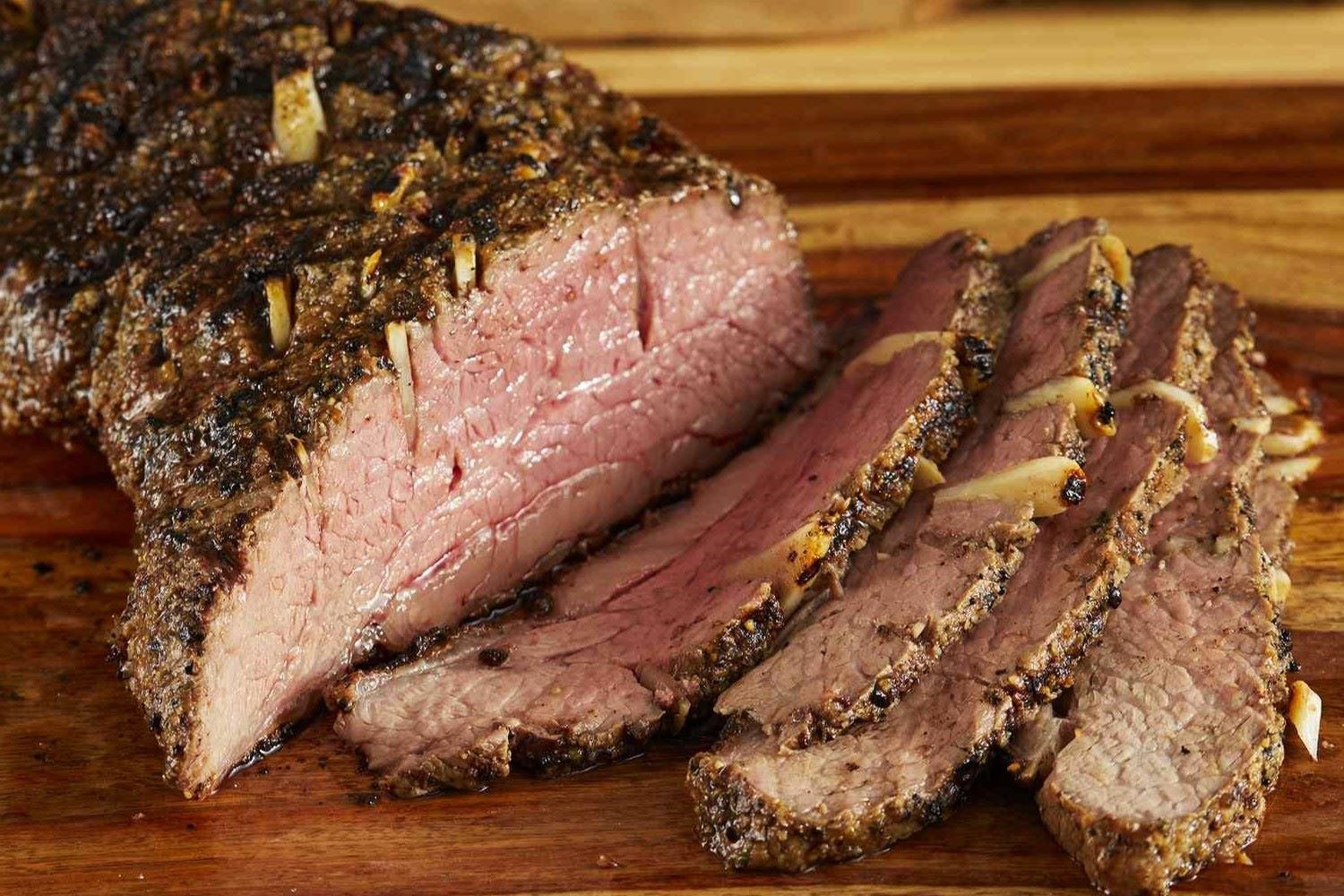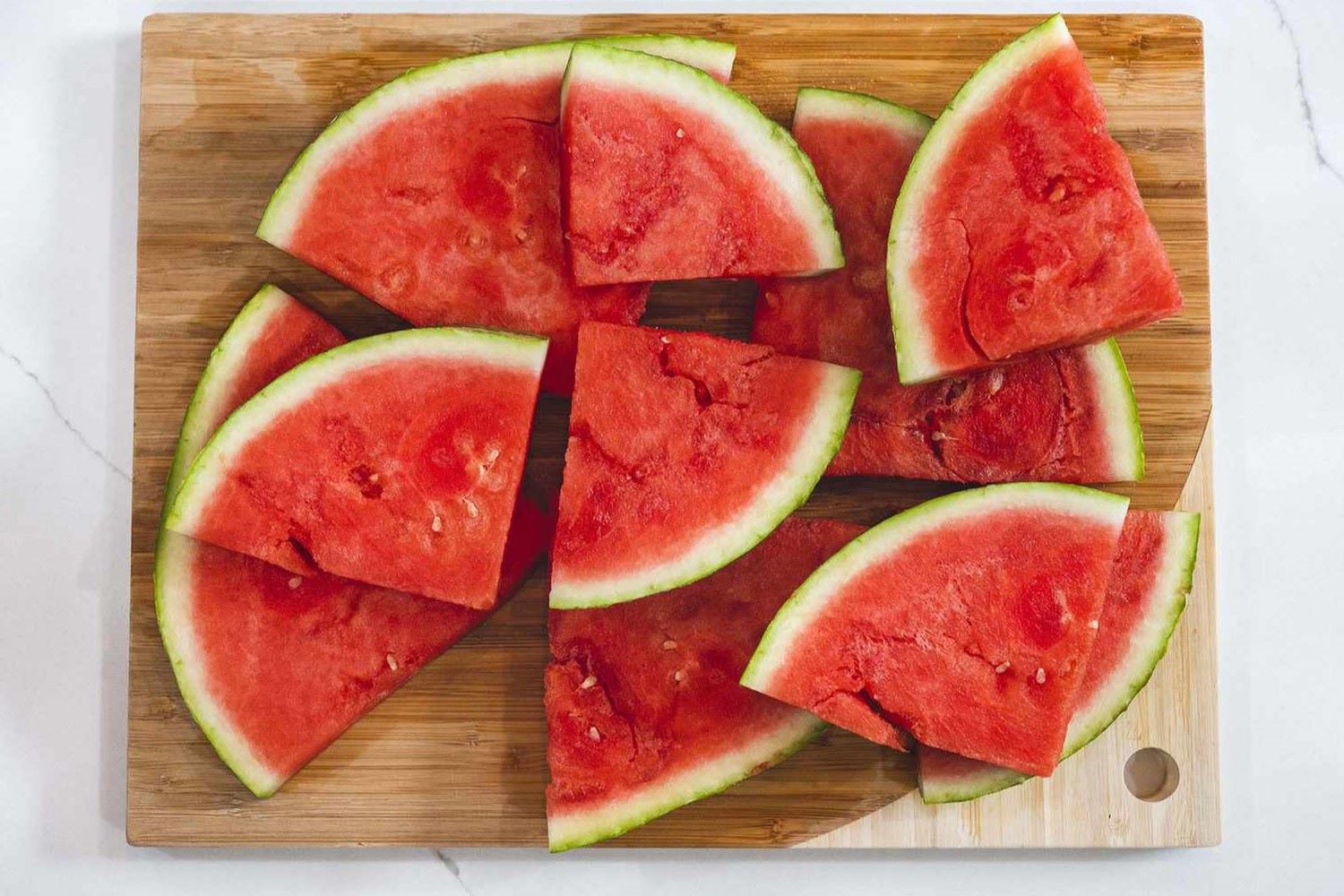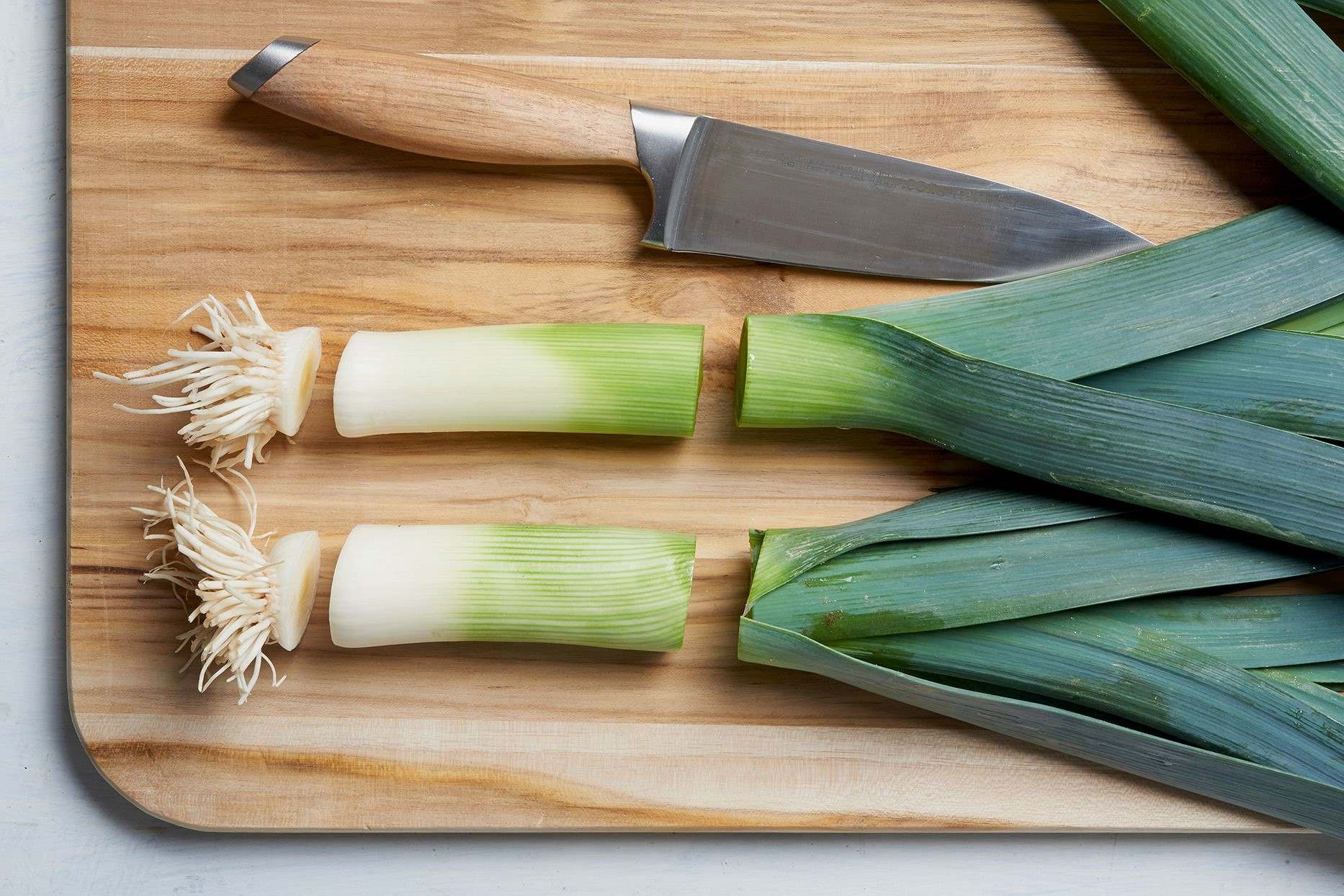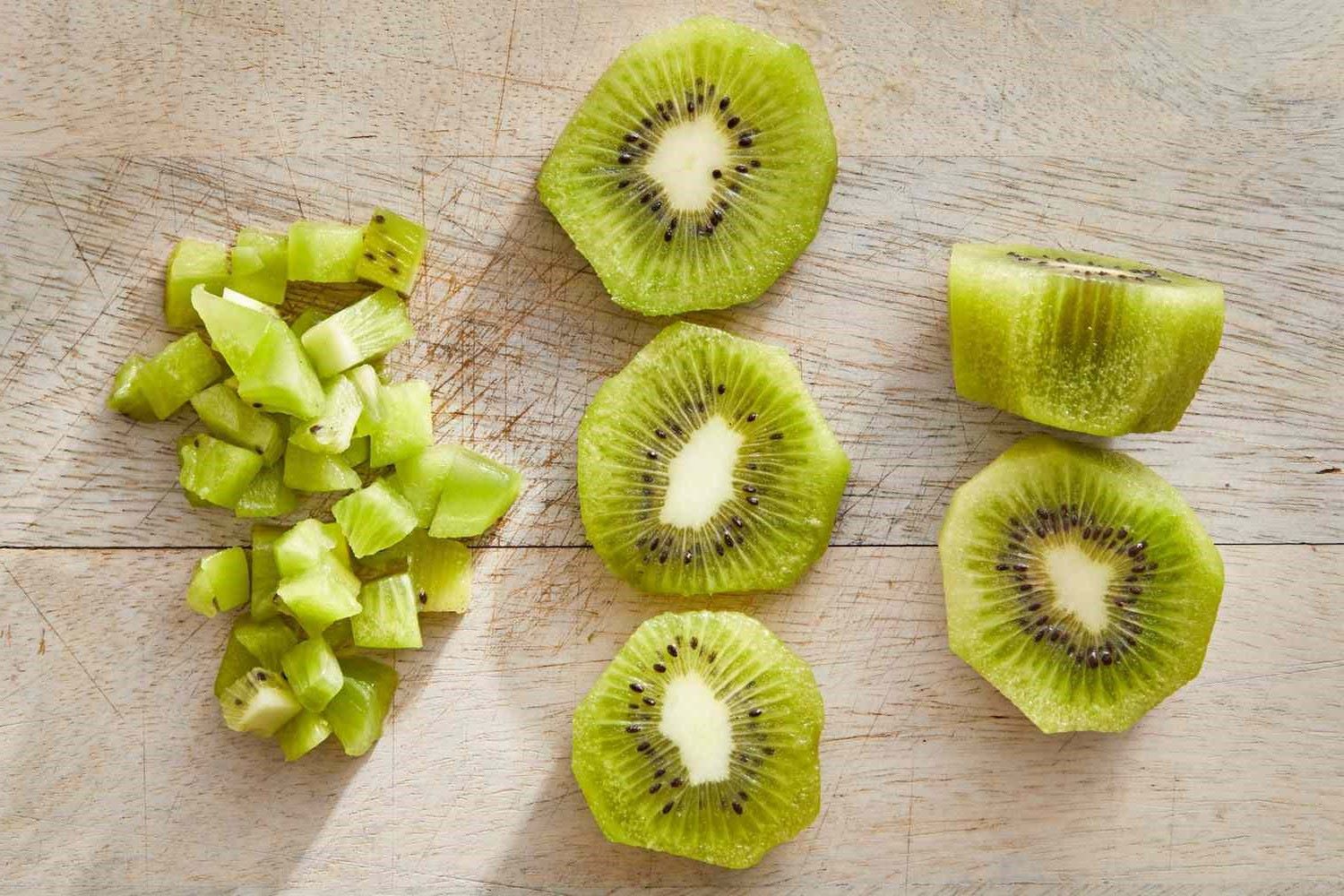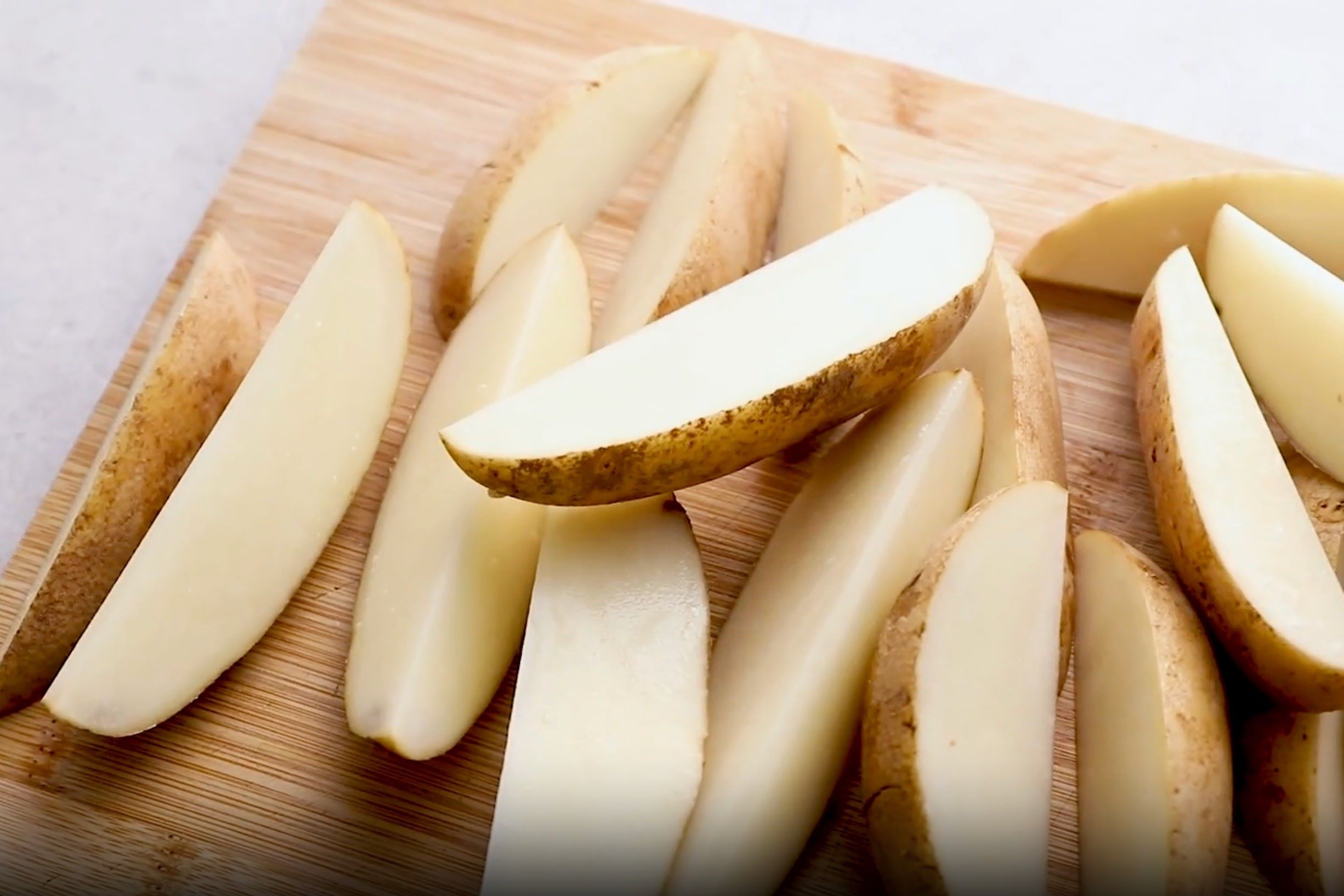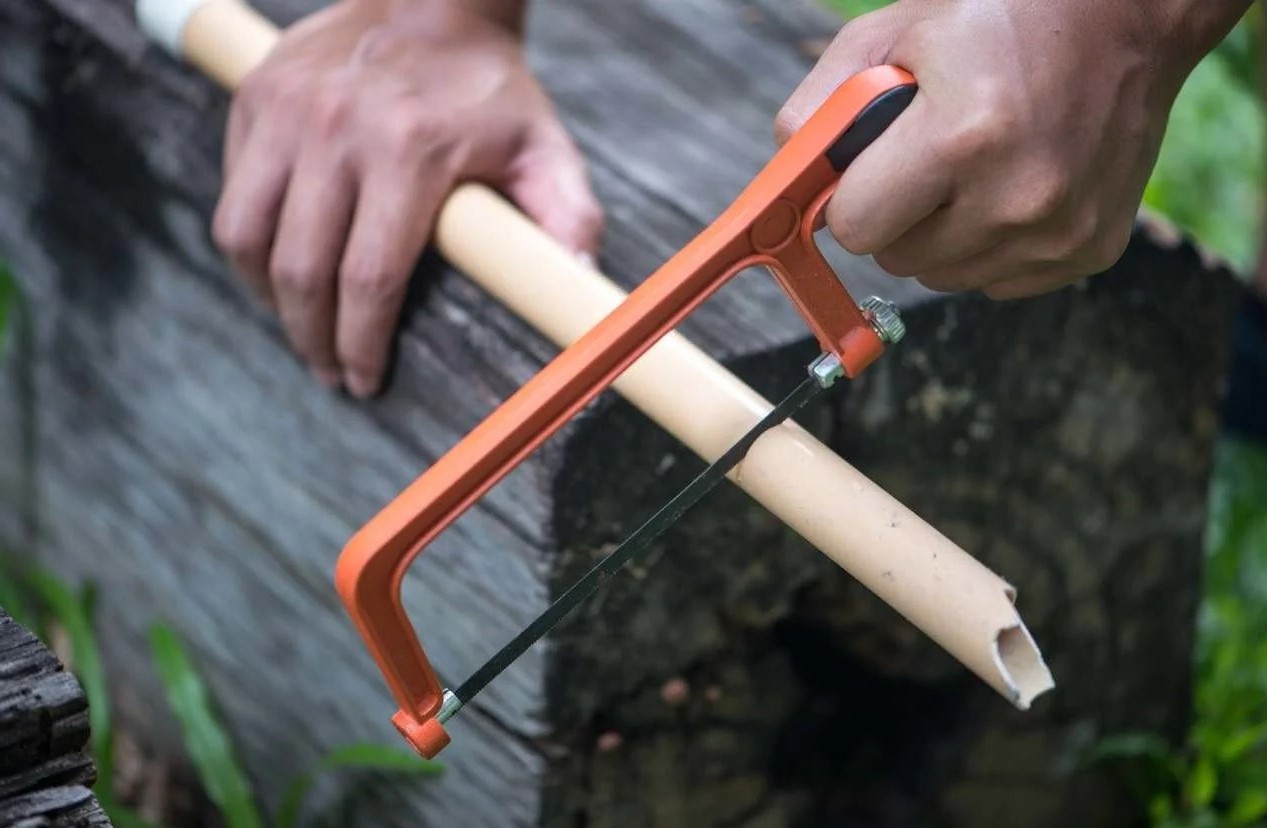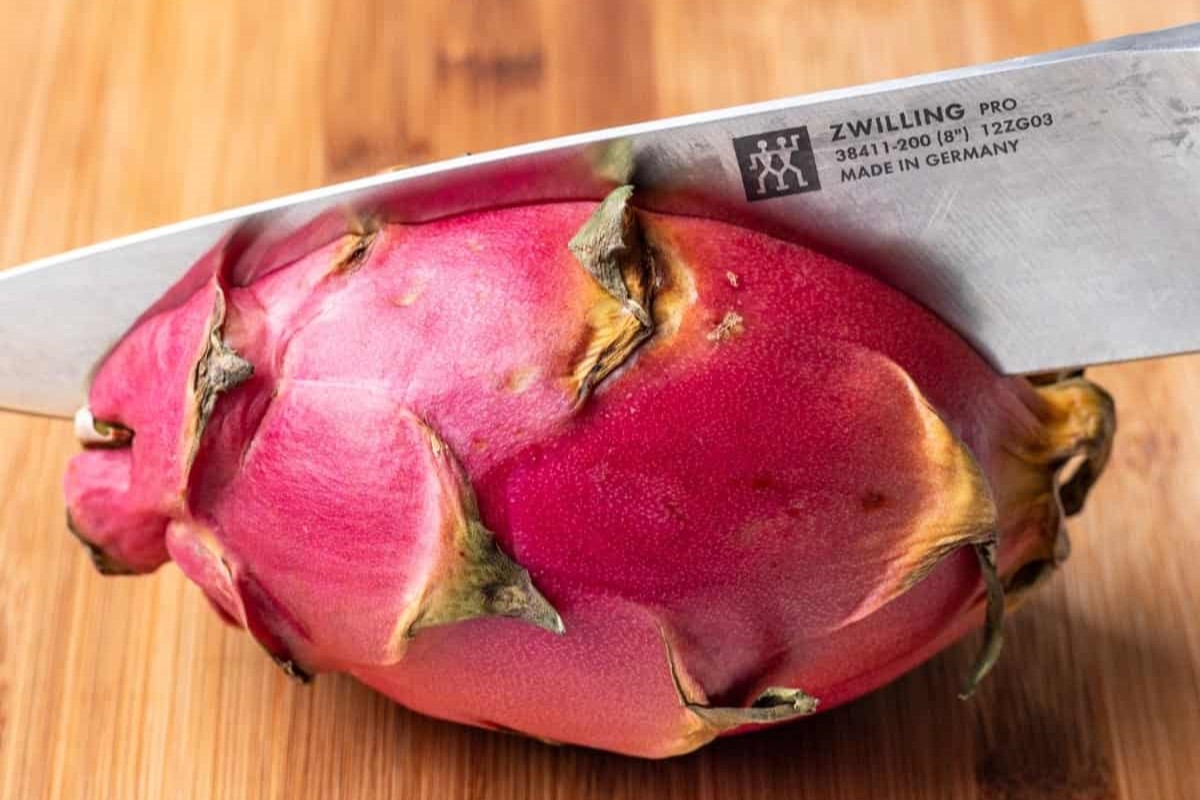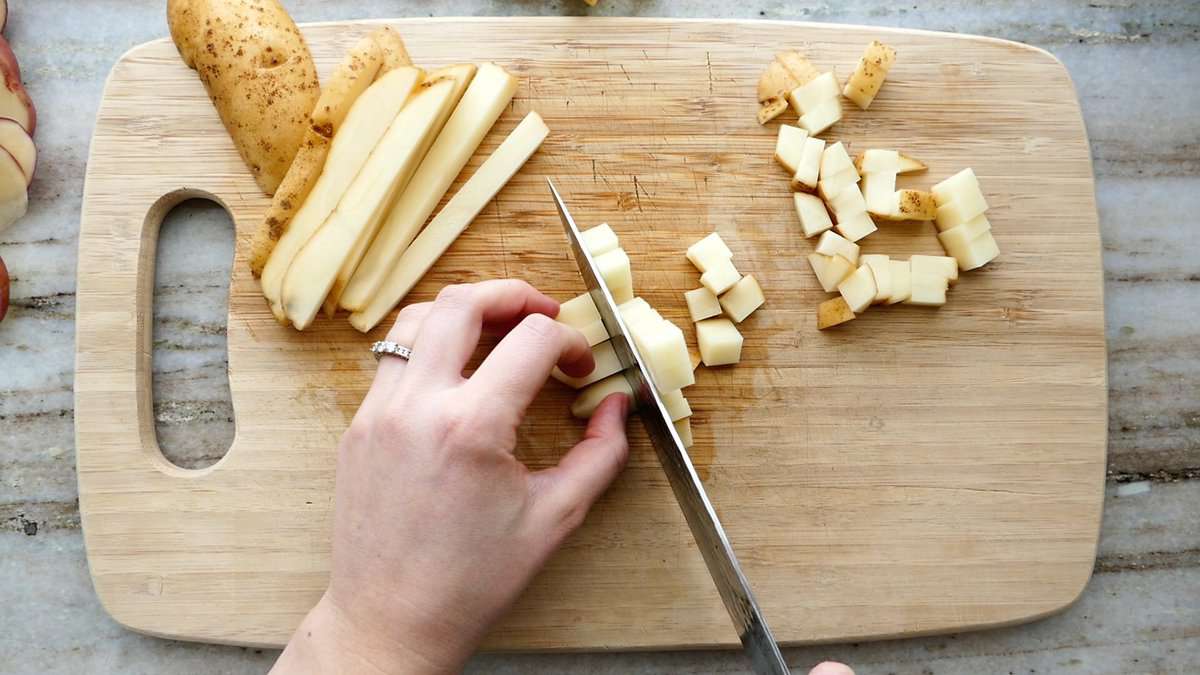Home>Food and Cooking>How To Cut A Cantaloupe
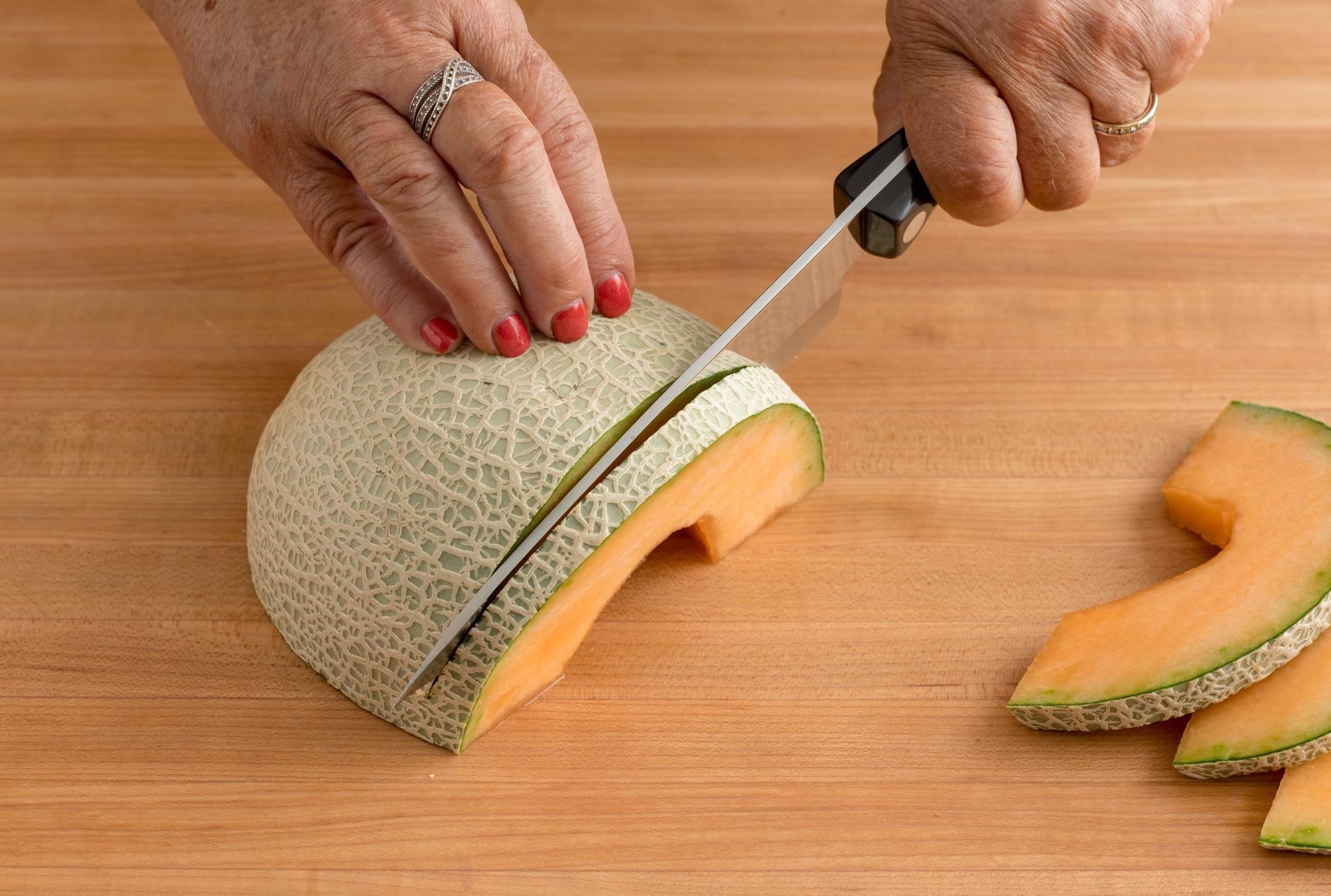

Food and Cooking
How To Cut A Cantaloupe
Published: February 29, 2024
Learn how to cut a cantaloupe with ease and precision in this simple guide. Discover essential tips and techniques for preparing this delicious fruit. Perfect for food and cooking enthusiasts!
(Many of the links in this article redirect to a specific reviewed product. Your purchase of these products through affiliate links helps to generate commission for Noodls.com, at no extra cost. Learn more)
Table of Contents
Introduction
Cantaloupe, also known as muskmelon, is a delicious and refreshing fruit that is a favorite during the summer months. Its juicy, sweet flesh and vibrant orange color make it a popular choice for snacks, salads, and desserts. However, cutting a cantaloupe can be a daunting task for some, especially if you're unsure of the proper technique. In this guide, we will walk you through the step-by-step process of cutting a cantaloupe with ease and precision. Whether you're preparing a fruit salad, a refreshing snack, or a fruity dessert, mastering the art of cutting a cantaloupe will elevate your culinary skills and allow you to fully enjoy this delectable fruit.
The key to successfully cutting a cantaloupe lies in using the right tools and following a systematic approach. By mastering the techniques outlined in this guide, you'll be able to effortlessly transform a whole cantaloupe into perfectly sliced or cubed pieces, ready to be enjoyed on their own or incorporated into a variety of culinary creations. So, grab your cutting board and a sharp knife, and let's embark on a flavorful journey as we explore the art of cutting a cantaloupe.
Step 1: Gather the necessary tools
Before you begin the process of cutting a cantaloupe, it's essential to gather the necessary tools to ensure a smooth and efficient preparation. Having the right equipment at hand will not only make the task easier but also contribute to the overall safety of the process. Here's a list of essential tools you'll need:
-
Cutting Board: Select a sturdy and spacious cutting board that provides ample room for maneuvering the cantaloupe. A cutting board with a groove around the edges will help contain any juice or debris, keeping your workspace clean.
-
Chef's Knife: A sharp chef's knife is indispensable for cutting through the tough outer rind of the cantaloupe. Opt for a large, sturdy knife with a broad blade to facilitate smooth and precise cuts.
-
Melon Baller (Optional): If you prefer to scoop out the flesh of the cantaloupe in the form of decorative balls, a melon baller can be a handy tool. This small, scoop-shaped utensil allows you to create uniform and visually appealing melon balls effortlessly.
-
Paper Towels: Keep a few paper towels handy to wipe any excess juice or residue from the cantaloupe, the knife, and your hands during the cutting process.
-
Storage Container: If you don't plan to use the entire cantaloupe at once, have a clean, airtight container ready to store any leftover pieces. This will help preserve the freshness of the fruit for later use.
By ensuring that you have these tools within reach before you start, you'll be well-prepared to tackle the task of cutting a cantaloupe with confidence and precision. With the right tools at your disposal, you can proceed to the next steps of the process, knowing that you're fully equipped to handle the task at hand.
Step 2: Wash the cantaloupe
Washing the cantaloupe is a crucial step in the preparation process, as it helps remove any dirt, bacteria, or pesticide residue that may be present on the surface of the fruit. Properly cleaning the exterior of the cantaloupe is essential for food safety and ensures that the fruit is ready to be cut and consumed. Here's a detailed guide on how to wash a cantaloupe effectively:
-
Rinse the Cantaloupe: Start by placing the whole cantaloupe under cool running water. Use your hands to gently rub the surface of the fruit, ensuring that all areas are thoroughly rinsed. This initial rinse helps remove any visible dirt or debris from the outer rind.
-
Use a Produce Brush (Optional): For an extra level of cleanliness, consider using a produce brush to scrub the cantaloupe's skin. A produce brush with soft bristles can help remove stubborn dirt and contaminants that may be lodged in the rough outer texture of the fruit. Gently scrub the entire surface of the cantaloupe, paying particular attention to the stem and blossom ends.
-
Dry the Cantaloupe: Once the cantaloupe has been thoroughly rinsed and scrubbed, pat it dry with a clean paper towel. Drying the fruit helps remove excess moisture, which can be conducive to bacterial growth. Ensure that the cantaloupe is completely dry before proceeding to the next step of cutting it.
By following these steps to wash the cantaloupe, you can be confident that the fruit is clean and ready to be cut. This simple yet essential process contributes to the overall safety and quality of the fruit, allowing you to enjoy the sweet, succulent flesh of the cantaloupe with peace of mind.
Step 3: Cut the cantaloupe in half
Once the cantaloupe is thoroughly washed and dried, it's time to prepare it for serving or further slicing. Cutting the cantaloupe in half is the initial step in accessing its juicy, flavorful flesh. Follow these simple yet effective steps to halve the cantaloupe with precision:
-
Secure the Cantaloupe: Place the washed and dried cantaloupe on a stable cutting board. Ensure that the fruit is positioned securely to prevent any rolling or slipping during the cutting process. This stability is essential for safety and precision.
-
Position the Knife: Take a sharp chef's knife and hold it firmly with your dominant hand. Position the knife perpendicular to the cantaloupe, with the tip resting on the top center of the fruit. The blade should be aligned to cut through the middle of the cantaloupe from top to bottom.
-
Apply Even Pressure: With a steady hand, apply gentle pressure to the knife and begin to slice through the cantaloupe from the top, working your way down to the bottom. Use a rocking motion to guide the knife through the fruit, maintaining a smooth and consistent cut.
-
Complete the Cut: Continue applying even pressure as you guide the knife through the cantaloupe until it is completely halved. Once the knife has passed through the entire fruit, gently separate the two halves to reveal the vibrant, juicy interior of the cantaloupe.
By following these steps, you can confidently and safely halve a cantaloupe, setting the stage for further preparation. Whether you plan to scoop out the seeds, slice the fruit into wedges, or create decorative melon balls, starting with two neatly halved cantaloupe halves provides a versatile foundation for a variety of culinary endeavors.
Step 4: Scoop out the seeds
After successfully halving the cantaloupe, the next crucial step in the preparation process is to remove the seeds and any surrounding fibrous material from the center of each half. This step not only ensures that the cantaloupe is ready for consumption but also allows for a clean and visually appealing presentation of the fruit. Here's a detailed guide on how to scoop out the seeds from a cantaloupe with precision and efficiency:
-
Prepare the Halves: Place the halved cantaloupe on a clean, stable surface, ensuring that the cut side faces upward. This positioning provides easy access to the cavity containing the seeds and facilitates a clear view of the interior of the fruit.
-
Use a Spoon or Melon Baller: Select a sturdy spoon with a sharp edge or a melon baller to scoop out the seeds. A spoon with a serrated edge or a melon baller with a sharp scoop can effectively remove the seeds and surrounding pulp from the cantaloupe's cavity. If using a spoon, ensure that it is strong enough to handle the task without bending or flexing.
-
Start from the Center: Position the spoon or melon baller at the center of the cantaloupe, directly over the cluster of seeds. Apply gentle pressure and begin to scoop out the seeds in a circular motion, working outward from the center. Take care to remove all the seeds and any fibrous strands that may be attached to them.
-
Work Methodically: Continue to scoop out the seeds and surrounding material from the entire cavity of the cantaloupe. Work methodically to ensure that all seeds and fibrous strands are thoroughly removed, leaving behind a clean, hollowed-out space ready for slicing or further preparation.
-
Inspect for Residual Seeds: Once the initial scooping is complete, inspect the cavity of the cantaloupe to ensure that no residual seeds or fibrous material remain. Use the edge of the spoon or melon baller to scrape away any remaining seeds, taking care to leave the flesh of the cantaloupe intact.
By following these steps, you can effectively and efficiently scoop out the seeds from a cantaloupe, leaving behind a clean and pristine cavity ready for slicing, dicing, or serving. This process sets the stage for the final step of preparing the cantaloupe for consumption, allowing you to fully enjoy its sweet and succulent flesh.
Read more: How To Ripen Cantaloupe
Step 5: Slice or cube the cantaloupe
Once the cantaloupe has been halved and the seeds removed, it's time to transform the fruit into bite-sized pieces that are perfect for snacking, adding to fruit salads, or incorporating into refreshing desserts. Slicing or cubing a cantaloupe requires precision and attention to detail to ensure uniform pieces that are visually appealing and easy to enjoy. Here's a comprehensive guide on how to slice or cube a cantaloupe with finesse:
Slicing the Cantaloupe:
- Stabilize the Halves: Place one of the halved cantaloupes on the cutting board, ensuring that the flat side rests securely against the surface. This stability is essential for safe and controlled slicing.
- Remove the Rind: Using a sharp chef's knife, carefully slice off the outer rind of the cantaloupe, working from top to bottom in smooth, downward motions. Ensure that you remove all of the tough, netted skin, exposing the vibrant orange flesh beneath.
- Create Uniform Slices: With the rind removed, proceed to slice the cantaloupe into uniform pieces of your desired thickness. Aim for slices that are consistent in size, which will contribute to an aesthetically pleasing presentation and a consistent texture when consumed.
Cubing the Cantaloupe:
- Prepare the Flesh: After removing the rind, use a sharp knife to cut the cantaloupe into long, rectangular strips. Ensure that the strips are of equal width to facilitate uniform cubing.
- Cross-Cut the Strips: Once the strips are prepared, carefully cross-cut them into cubes of your preferred size. Aim for cubes that are evenly sized, creating a visually appealing and easy-to-eat final product.
- Adjust as Needed: If you prefer smaller or larger cubes, adjust the size of your cross-cuts accordingly. Consistency in size is key to achieving an attractive presentation and ensuring a harmonious eating experience.
By following these steps, you can expertly slice or cube a cantaloupe, unlocking its juicy, sweet flesh in a format that is versatile and ready to be enjoyed in various culinary applications. Whether you choose to savor the slices on their own, incorporate them into vibrant fruit salads, or use the cubes to elevate desserts and smoothies, mastering the art of slicing and cubing a cantaloupe allows you to fully appreciate the delightful flavors and textures of this beloved fruit.
Step 6: Serve and enjoy!
After meticulously preparing the cantaloupe by washing, halving, removing the seeds, and slicing or cubing it, the final step is to savor and relish the fruits of your labor. Whether you're serving the freshly cut cantaloupe as a standalone snack, incorporating it into a vibrant fruit salad, or using it to elevate a refreshing dessert, the presentation and serving play a pivotal role in enhancing the overall experience.
Read more: How To Cut A Bell Pepper
Serving Suggestions:
1. Standalone Delight:
When serving cantaloupe as a standalone treat, consider presenting the slices or cubes on a decorative platter or in a bowl garnished with a sprig of fresh mint. The vibrant orange hues of the fruit will pop against the backdrop, creating an enticing visual appeal. For an added touch of elegance, consider serving the cantaloupe on chilled plates to enhance its refreshing qualities.
2. Fruit Salad Ensemble:
Incorporating freshly cut cantaloupe into a fruit salad adds a burst of sweetness and juiciness to the medley of flavors. To create an eye-catching fruit salad, combine the cantaloupe with an assortment of complementary fruits such as strawberries, blueberries, and kiwi. Serve the fruit salad in a large, transparent bowl to showcase the colorful array of fruits, enticing both the eyes and the palate.
3. Dessert Extravaganza:
For dessert applications, consider layering the sliced or cubed cantaloupe over a bed of creamy Greek yogurt and drizzling it with a touch of honey for a simple yet indulgent treat. Alternatively, blend the cantaloupe into a refreshing smoothie or freeze the cubes for a delightful addition to chilled fruit sorbets or popsicles.
Presentation Tips:
- Garnishes: Elevate the visual appeal of the served cantaloupe by adding a sprinkle of toasted coconut flakes or a dusting of powdered sugar for an elegant touch.
- Chilled Serveware: To enhance the refreshing nature of the cantaloupe, serve it on chilled plates or in chilled bowls to maintain its cool, crisp texture.
- Creative Displays: Experiment with creative presentations by arranging the cantaloupe slices or cubes in geometric patterns or concentric circles for an artistic and inviting display.
By paying attention to the presentation and serving of the freshly cut cantaloupe, you can elevate the overall experience, transforming a simple fruit into a visually stunning and delectable offering. Whether enjoyed on its own, as part of a vibrant fruit ensemble, or as a delightful dessert component, serving and relishing the freshly cut cantaloupe is a celebration of its natural sweetness and refreshing qualities.

